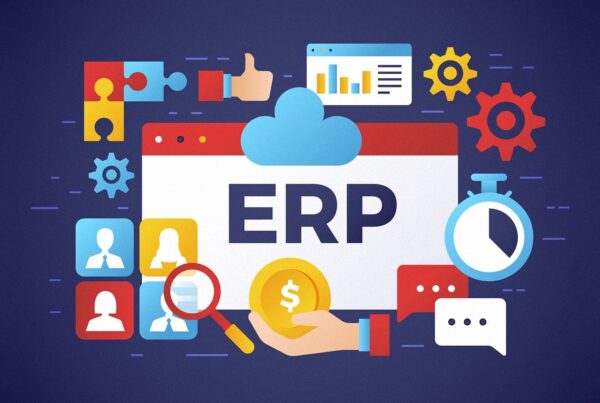Businesses are increasingly aware of the need to create a diverse and inclusive workplace, but many find that their recruitment efforts fall short.
You might find that despite your expertise and good intentions, you may be alienating the people you want to interview.
That’s because when it comes to diversity hiring, communication is key.
Poor communication can sabotage a company’s recruitment strategy, especially in the tech sector, where demand for talent is high and competition for the best candidates is fierce.
In this article, we’ll explore how your poor communication may be turning off the people you want most to interview and discuss ways to improve recruitment practices.
What Is Diversity Hiring?
First things first, what exactly is diversity hiring?
Diversity hiring is the practice of seeking out and recruiting individuals from different backgrounds regardless of their gender, age, race, or other characteristics.
This process has become increasingly important as more and more organizations strive to create a more inclusive workplace environment.
Companies that practice diversity hiring benefit from having employees with different perspectives and experiences that can lead to new ideas and solutions.
Additionally, it helps reduce the chances of bias in decision-making by ensuring everyone has a fair shot at opportunities.
Diversity hiring also helps build stronger relationships between people from different backgrounds, which can contribute to better team productivity.
Moreover, companies are able to attract more diverse candidates who traditional recruitment methods may overlook.
A well-defined diversity hiring plan should include goals for who you want to hire and how you will go about finding them; clear job descriptions; outreach strategies; fair assessment processes such as interviews and tests; training on unconscious bias for recruiters; and monitoring progress against objectives.
Are Your Job Ads Gender Biased?
Have you read your job ads lately? Take a look at them right now. You might not realize it, but the job ads you’re sending out could be accidentally gender biased.
Gender bias in job postings is a real issue that many organizations don’t realize they are contributing to.
Job postings, especially those with overly masculine or feminine language, can be a major deterrent for potential applicants of either gender.
In a study, social scientists from the University of Waterloo and Duke University found that job ads with masculine words drew more male applicants. In contrast, ads with feminine words drew more female applicants.
Job advertisements in male-dominated fields (such as software programming) used masculine-coded words like “competitive,” “dominate,” and “ninja” far more than job ads in female-dominated fields. Follow-up research confirmed that such words made job listings less appealing to women.
You should take steps to ensure your job postings are free from any sort of unconscious biases that may exist. To avoid accidental “gendered language,” run your ads through this Gender Decoder tool.
Are You Asking Candidates for More Than You Need?
With the job market becoming increasingly competitive, employers often ask for more of their candidates than necessary.
It’s as if everyone is looking for a unicorn employee— someone who checks all the boxes of the job role and has all the education, certifications, experience, and leadership skills of a Fortune 500 company.
But asking for lengthy qualifications often leaves job seekers feeling overwhelmed and unsure of what to include in their applications. It can also discourage people from minority groups and marginalized communities from applying.
Sheryl Sandberg’s 2013 book, Lean In, addressed the issue of women only applying for jobs for which they are 100% qualified. This anecdote has sparked heated debate. However, the UK-based Behavioural Insights Team investigated this theory and discovered some truth in it.
Most employers and hiring managers have a range of qualifications they’re looking for when recruiting new staff, but these should just be used as a guideline.
While you may require a certain amount of experience or qualifications, you should consider applicants who don’t tick every box but still have other skills or qualities that could make them suitable for the role.
Where Are You Holding Hiring Events?
Joining a job fair (also known as a career fair or career expo) is a popular way to develop your company’s visibility and brand in your community.
These events offer the opportunity to meet with potential new hires, build relationships with key influencers in your industry and showcase your company to a large group of prospective employees.
But when it comes to job fairs, location is key. Finding the right place for a job fair or other type of hiring event can make all the difference.
If your goal is to tap into a wider and more diverse talent pool, consider the community’s demographic beforehand. Think about your target audience and what types of locations they frequent.
For example, if you’re looking for experienced professionals from diverse backgrounds, then choose a more centrally located spot, such as a hotel ballroom or convention center. It’s important to keep accessibility in mind so that potential applicants don’t feel discouraged by long commutes or parking fees.
In addition, university hiring events hosted at public community colleges, tribal community colleges, and historically black colleges offer a wider net for finding the most qualified candidates regardless of their background.
Not only do these community colleges offer a larger pool of potential employees from diverse backgrounds, but they also give an opportunity to those who may not have access or resources to attend more prestigious educational institutions.
They provide an affordable education option for students, many of whom are first-generation college students, job changers, or immigrants with skills that need to be recertified or improved.
These students can use this chance to gain valuable experience from a top-tier employer and open up new opportunities for themselves.
Final Thoughts
Effective communication is an essential component of any successful diversity hiring plan. It promotes an equitable, diverse, and inclusive work environment by eliminating barriers, increasing understanding, and providing access to opportunities.
A carefully crafted recruitment strategy, coupled with clear and consistent messaging, will help you attract and retain a diverse workforce.
Start building your dream team today!
Partner with Jarvis, and you won’t risk falling behind in the global competition for tech talent.
Jarvis are global leaders in tech recruitment and tech hiring services. We have successfully sourced and recruited expert professionals for businesses of all sizes, ranging from startups to big corporations. We help you find the right candidate for the job.
Discover the latest tech jobs and industry news by following us on LinkedIn.
Get in touch with us today, and let’s work together to make your company the success it should be.




